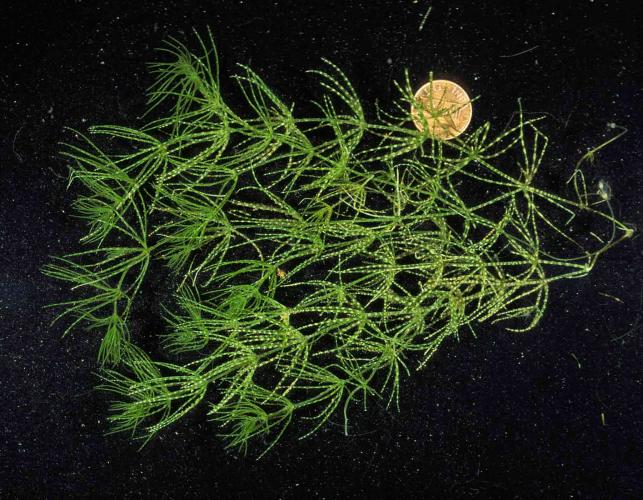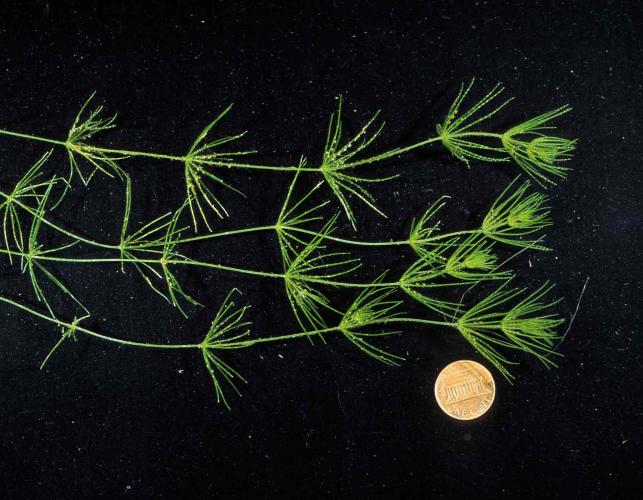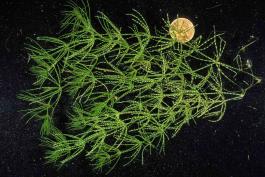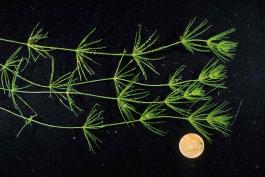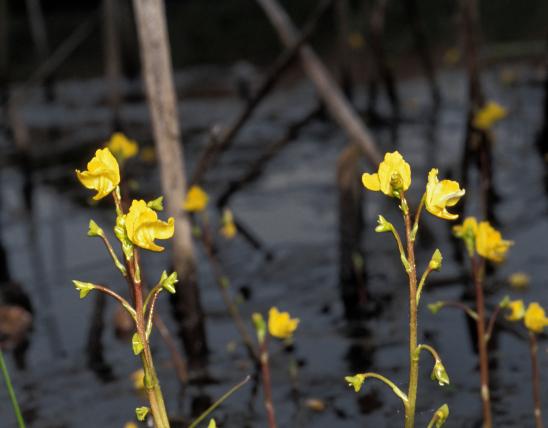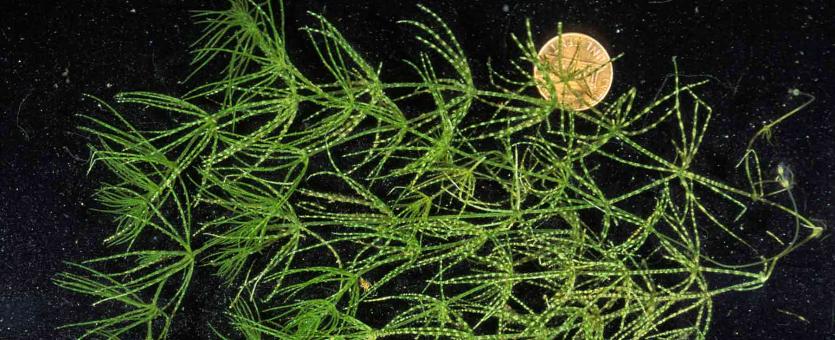
These aquatic algae look like regular vascular plants because they form stemlike, leaflike, and rootlike structures. Chara (pronounced care-uh or karr-uh) is gray green, with a crisp, gritty texture, a musky or garlicky odor, and whorls of needlelike structures that resemble leaves. The tiny dark balls that form on the whorls of plant are sporangia, which are spore-forming, reproductive structures. Removed from water, chara becomes grayish or white once it dries.
Statewide.
Habitat and Conservation
Grows attached to muddy bottoms in calm waters. The gritty feel of chara comes from a thick coating of lime, which it extracts from the hard, alkaline water in which it is commonly found. The name “stonewort” arose from the lime that often encrusts these plants. These curious underwater plants are actually large algae, growing in a form that makes them resemble flowering plants. Botanists believe that the various species of chara are the closest living algal relatives to the land plants.
Control
Human Connections
Chara can be undesirable in ponds and lakes because it can carpet the bottom and crowd out other species. An overabundance of chara is often brought about by excessive nutrients entering the water, such as fertilizer, agricultural runoff, and leaking septic systems.
Ecosystem Connections
As with other submerged aquatic plants, chara provides important food and habitat for aquatic animals large and small. The smallest animals, such as daphnia and tiny insects, are eaten by progressively larger ones, fish, amphibians, birds, and so on. Some waterfowl eat chara.
